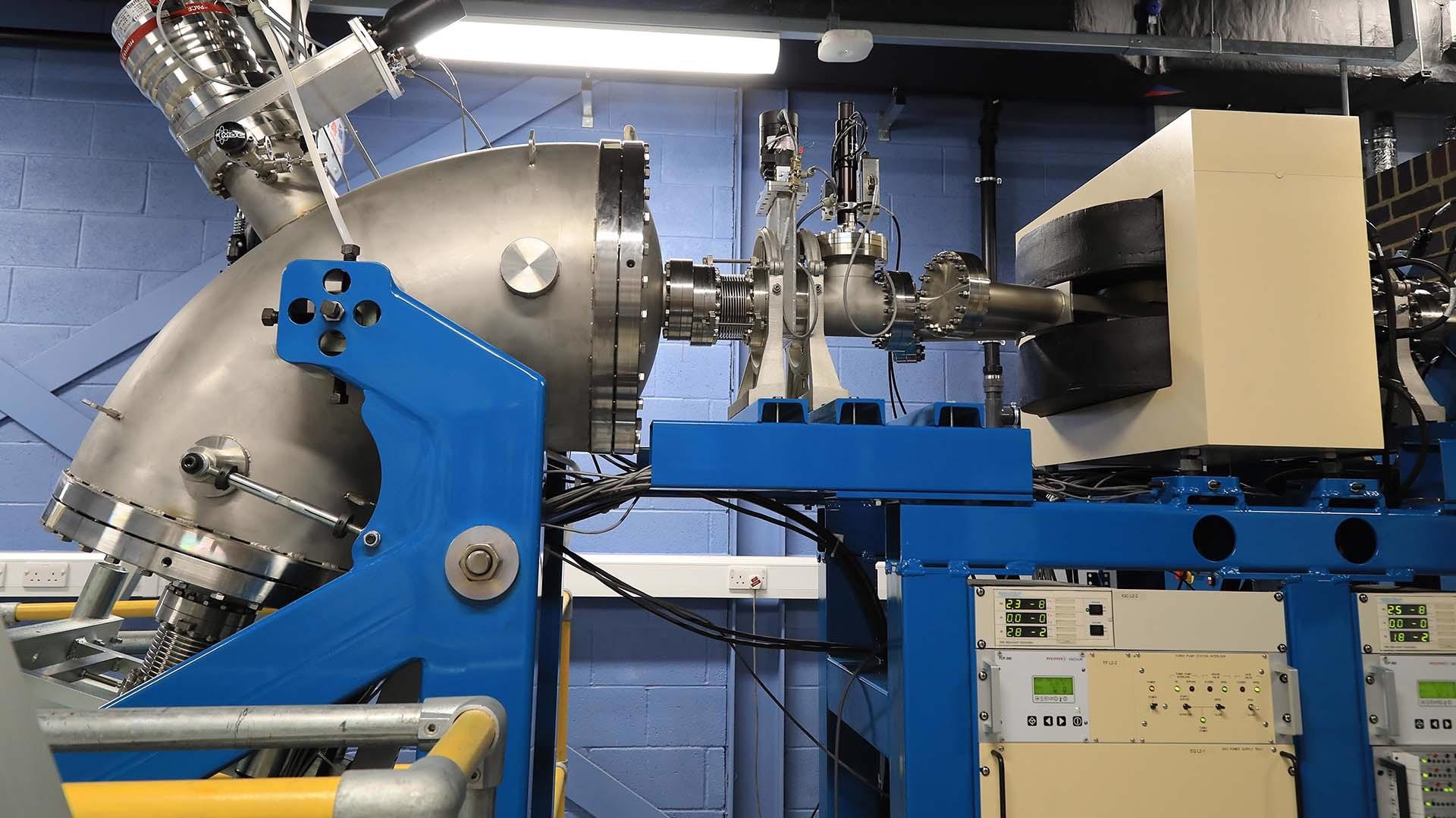Dec 8 2020
Researchers could be a step closer to achieving manned space missions in spacecraft built with aluminum that is lightweight yet radiation-resistant, thanks to research performed by a world-leading facility at the University of Huddersfield.
 Inside the MIAMI-2 facility. Image Credit: University of Huddersfield.
Inside the MIAMI-2 facility. Image Credit: University of Huddersfield.
The Microscopes and Ion Accelerators for Materials Investigations, or MIAMI-2, facility has enabled Dr Matheus Tunes to analyze a new alloy that hardens aluminum without considerably increasing its weight.
It is essential for spacecraft launched from Earth to be light and yet have the appropriate amount of fuel to help them achieve orbit. If the spacecraft is too heavy, the amount of fuel needed would be enormous; however, once the spacecraft goes beyond the Earth’s protective magnetic field, a vehicle may be exposed to prospectively deleterious amounts of solar radiation, which is more crucial for any long-duration mission, for example, to Mars.
Alloys that Harden Aluminum for Space Travel
One solution is to build spacecraft using aluminum since it is a light yet robust material. Although alloys make aluminum harder through precipitation strengthening, the radiation in outer space can dissolve the hardening precipitates with prospectively fatal and disastrous consequences for astronauts.
However, the study performed at MIAMI-2 in collaboration with Montanuniversitaet Leoben (MUL) in Austria has found that a specific hardening precipitate of a new aluminum alloy—created by a team of metallurgists headed by Professor Stefan Pogatscher (MUL)—does not dissolve upon being bombarded by particle radiation than existing data on irradiation of traditional aluminum alloys.
The outcome is an alloy with a radiation-resistant hardening phase known as a T-phase, which exhibits a complicated crystal structure of Mg32(Zn,Al)49. The study resulted in a paper published in Advanced Science, a prestigious journal, as well as an eye-catching cover.
The idea of the paper was testing these new alloys using the MIAMI facilities, because we can subject the alloy to energetic particle radiation and, at the same time, monitor the effect of this radiation on the alloy microstructure with a transmission electron microscope.
Dr Matheus Tunes, University of Huddersfield
“We monitored the crystallographic signal of the T-phase as the radiation increased and observed that compared with other conventional aluminium alloys, the alloy we developed was radiation tolerant—meaning that the hardening phase does not dissolve under high radiation doses,” added Dr Matheus.
Dr Matheus continued, “It sheds light on a very exciting new field of research we call ‘prototypic space materials for stellar-radiation environments’. A nuclear reactor is also an extreme environment, as is the sun with solar cycles, but dynamic instabilities on the sun such as solar flares and coronal mass ejections are more extreme than anything on Earth. The sun is a very efficient nuclear fusion reactor and high-energy particle accelerator.”
When Matt first came to us from Brazil as a postgraduate student he was always looking for new projects and created a number of new collaborations, and I’m very happy that as he is starting the next part of his career in Austria and expanding into new areas, he is continuing to collaborate with us here at the MIAMI facility, with this aluminium alloys project being just one example.
Dr Graeme Greaves, Senior Research Fellow, MIAMI Facility, University of Huddersfield
Research Could Benefit Deep Space Missions
With the current planning of manned missions to the moon and Mars, the benefits of spacecraft sufficiently lightweight to launch and endure radiation to safeguard the crews are evident. For Matheus, Graeme, and colleagues, the next step in the research is to determine why the alloy acts the way it does and what further advantages could be achieved.
I am particularly proud that I finished my PhD in Huddersfield, I’ve now moved to Austria but still continue to work with Graeme. We have an active collaboration and 2021 will be a busy year for the joint Huddersfield-Leoben space materials research project.
Dr Matheus Tunes, University of Huddersfield
“We discovered the T-phase is radiation-tolerant, but we haven’t discovered why that is. We have an idea which involves the chemical complexity of the phase that we believe could lead to some very interesting research. We hope that we can make an important contribution to further human exploration of space,” concluded Dr Matheus.
Journal Reference:
Tunes, M. A., et al. (2020) Prototypic Lightweight Alloy Design for Stellar‐Radiation Environments. Advanced Science. doi.org/10.1002/advs.202002397.